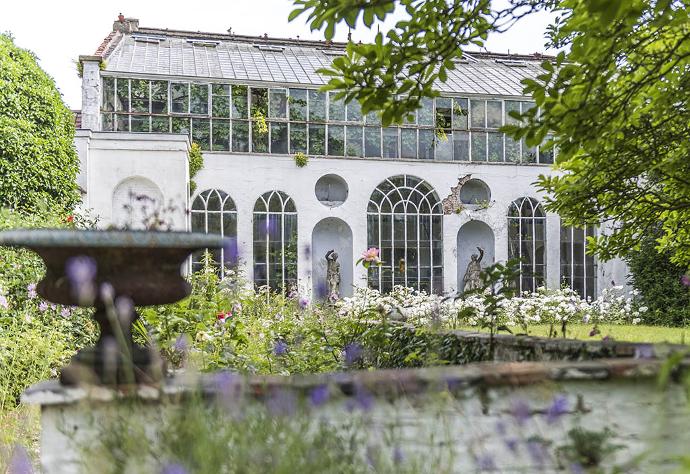HOUSE BEAUCARNE
House Beaucarne is a historic residence near Oudenaarde owned by the same family since 1748. Today, it remains in the hands of the Beaucarne and Fredericq descendants, who oversee guided tours and regularly host public events.
PRESENTATION
Founded in the 18th century, House Beaucarne has remained in the hands of the same family for 250 years. The house has preserved its original interiors, allowing visitors to step back into the 18th and 19th centuries.
The Beaucarne and Fredericq families were passionate collectors of antiques and art, and the house displays period furniture from Saint-Sauveur Abbey in Ename. Other remarkable collections include antique dolls’ houses, miniatures, toy theatres, and religious artifacts.
The garden, designed in the 19th century, was once considered one of the finest in Flanders. It is now home to Belgium’s oldest surviving grape greenhouse.
LAARNE CASTLE
One of Belgium’s best-preserved moated medieval castles, Laarne Castle has evolved into an elegant aristocratic summer residence. The Royal Association of Historic Houses and Gardens of Belgium owns the castle and is managed by the heritage organization Herita.
PRESENTATION
Dating back to the 13th century, Laarne Castle retains remarkable medieval features, including its round towers and square keep. In the 17th century, it was the site of infamous witch trials before being transformed into a noble retreat in 1673. Today, the castle boasts magnificent halls, such as the Knights’ Hall, refined salons, a former prison, and a 14th-century chapel adorned with exquisite frescoes. Its inner courtyard reflects the fusion of medieval and 17th-century architecture. The castle also houses an exceptional collection of 500 silver pieces, one of the finest in Belgium.
OOIDONK CASTLE
Nestled in a bend of the Lys River, just a few kilometers from Ghent, Ooidonk Castle is regarded as a gem of flamboyant Renaissance architecture. Surrounded by moats and lush gardens, it offers a haven of peace and serenity, despite its turbulent past.
PRESENTATION
In the 16th century, the castle belonged to Philip de Montmorency, Count of Horn, and an ally of William of Orange. After his execution in 1568, the castle suffered repeated destruction during the Wars of Religion. It was later rebuilt in Renaissance style by Maarten della Faille, a wealthy Antwerp merchant.
In 1864, Senator Henri t’Kint de Roodenbeke and his wife, Zoé de Naeyer purchased the estate. Today, 150 years later, their descendant, Count Henry t’Kint de Roodenbeke, still lives there.














